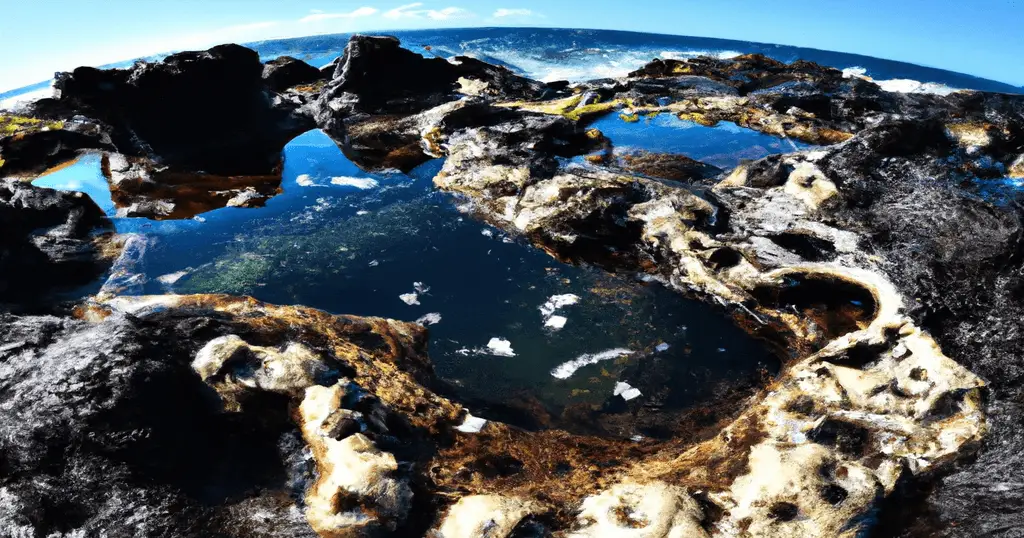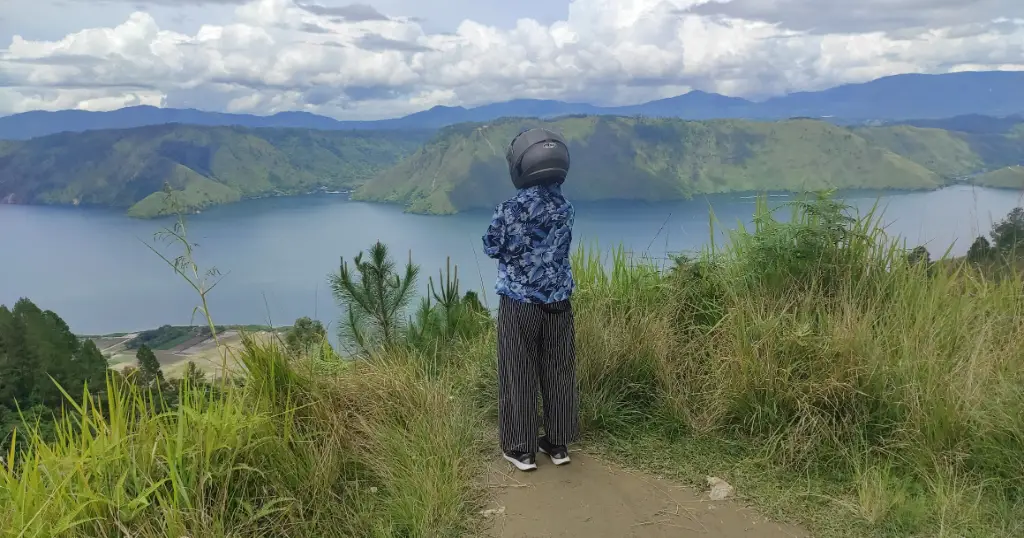Tide pooling is a fun outdoor activity that is becoming increasingly popular among children and adults. It allows you to get some exercise and provides an opportunity to get up close and personal with flamboyant and spectacular sea animals. On this page, we will answer some of the most common questions regarding tides, tide pools, and what to expect from your first tide pooling adventure!
Basic info about tide pools
The following answers are intended to provide basic background knowledge about tide pools.
What are tide pools, and how are they formed?
As the name suggests, tide pools are pools of water that are filled up during high tide. Then, when the ocean recedes during low tide, the water remains trapped in these rocky pockets along the shore. The animals in the water also get trapped – until the next high tide. Tide pools are a unique and incredibly diverse habitat for many marine animals. Tide pools can range from a foot to dozens of feet in depth!
Where can I find them?
Tide pools are always located in the intertidal zone along rocky coasts. The intertidal zone is a unique area between the high and low tide lines. This area is exposed to the air for part of the day and submerged in water for part of the day. So in general, regions and landscapes that meet the following requirements may feature tide pools:
- Not landlocked
- A lengthy, rocky shore
- Medium to high tidal range
Volcanic islands like Hawaii have a lot of lava rock on the shore, which creates tons of tide pools. On our page, we have in-depth guides to tidal pools on Oahu, Kauai, Lanai, and Big Island of Hawaii.
California also has a few, but fairly large tide pooling destinations.
Florida has a handful of decent options.
Why are tide pools important?
Tide pools do more for our planet than simply allowing overheated tourists to cool off and explore nature. They are ecosystems whose diversity can be compared to that of tropical rain forests or colorful coral reefs. They often contain creatures endemic to a specific region. They are packed with hardy sea animals that often have to be able to survive on air, as well as underwater.
What are lava tide pools?
Lava tide pools are simply tide pools that have been formed by lava rock. They are mostly found on volcanic islands, such as Hawaii, Bali, Sumatra, or Lombok. Lava tide pools are often even more diverse than regular tide pools, since they tend to be rich in minerals. However, the lava rock can be razor sharp, so you should definitely bring some sturdy swimming shoes.
When visiting tide pools…
Here are answers to some questions regarding precautions you can take to ensure you and your family can safely enjoy tide pooling at the ideal time.
Is tide pooling safe?
Tide pooling can be safe or not. It all depends on you! We suggest taking the following precautions:
- Don’t visit a remote tide pool location without a mobile phone
- Never swim in a tide pool alone
- Don’t blindly stumble around barefoot in a tide pool (You could hurt yourself or other creatures)
- Constantly be aware of the waves, currents, and tides (don’t get distracted by taking selfies or drone shots!)
- If you get in trouble or spot a swimmer in distress, call the Fire Department at 911
What is the best time to see tide pools?
Tide pools fill up during high tide and are exposed during low tide. Therefore, you should ensure that it will be low tide when visiting a tide pool. Tides change every day. Check the tidal charts for the specific area to determine when the next low tide will be.
What should you wear when visiting tide pools?
We recommend wearing sturdy swimming shoes to avoid getting cut on a sharp rock or stung by sea urchins. In addition, you may want to wear a wetsuit for additional protection. Don’t forget your snorkeling gear as well!
Can you take shells from tide pools?
Tide pooling is often associated with touching and taking its inhabitants, but we encourage you not to do this. Even just an ordinary shell may be the main residence of a hermit crab, an octopus or other sea creatures. Even if there is no animal inside the shell, it may be a potential home in the future. If every tide pooler took a “souvenir” with them, the biodiversity of the tide pools would start to deteriorate incredibly fast.
What is a tidal beach?
A tidal beach is a type of coastline where the land meets the sea at an elevation that is determined by the tides. A tidal beach can also have tide pools.
Tidal beaches are found all around the world, and they can be either natural or man-made. Natural tidal beaches typically form when there is a change in the coastline, such as when a river estuary meets the ocean or when a landmass is eroded over time. Man-made tidal beaches can be created by adding sand or other materials to the shoreline. Tidal beaches are dynamic places that are constantly changing, and they provide important habitats for many plants and animals.
FUN FACTS ABOUT TIDE POOLS
Now that you know how to behave in and around tide pools let’s see what you can expect from your next tide pooling adventure!
What kinds of animals live in tide pools?
Some of the most common animals you may encounter in tide pools include:
- Barnacles
- Mussels
- Sea Urchins
- Anemones
- Sea Stars
- Crustaceans
- Octopuses
- Various hard and soft coral
- Wobbegongs
Wobbegongs are bearded sharks that live on the shoreline of Australia and Indonesia. They can walk on land and often hop between tide pools looking for prey!
How do these animals survive in tide pools?
Animals like barnacles and mussels constantly live in the splash zone. They are protected by their shell, which also allows them to seal in moisture to survive the low tide. Other animals like crabs and snails have a thick exterior that also slows down evaporation (they don’t dry out as easily).
What should you not touch in tide pools?
If you are a seasoned diver or snorkeler, you probably already know that ideally, you shouldn’t touch anything besides the rock to get in and out of the tide pool. Intertidal animals are incredibly sensitive, and slight disruptions in their everyday life can have devastating consequences. In addition, some octopuses, fish, and sea slugs can be incredibly poisonous, and it can be difficult to assess the species. In a nutshell: Don’t risk your life or their life by touching them!
What are the green things in tide pools?
Green anemones are found throughout the world in both cold and warm oceans. In the Northern Hemisphere, they are commonly found in tide pools along the coasts of Europe and North America. In the Southern Hemisphere, they can be found on the rocky shores of Australia and New Zealand. These beautiful creatures are often mistaken for plants because of their vivid green coloration.
Green anemones have many tentacles that come out from a small cone-shaped area. The tentacles have a sting that can paralyze small prey like sea urchins and fish. They are pulled into the mouth and eaten. The sting is not harmful to humans, but it feels sticky when touched.
How deep do tide pools get?
Most tide pools are only a few inches deep, but some of them can get several feet deep. Their size can vary from a backyard pool to that of an olympic swimming pool, and it can be difficult to tell, where one tide pool ends, and another begins. Shallow tide pools are usually more kid-friendly since they tend to be a lot warmer, and sea creatures can be spotted more easily.
Can you make a tide pool artificially?
Yes, it is possible to create an artificial tide pool. It has been done before in Australia and Europe. It is a relatively new conservation technique meant to enhance the local, endemic biodiversity. These artificial tide pools are not a tourist attraction, though.
WHAT ARE TIDES?
There are no tide pools without tides. And tides can vary wildly across the globe. Here is some interesting info about tides in general.
Where are the highest tides in the world?
The Bay of Fundy is located between Nova Scotia and Brunswick in Canada. This place has the biggest tidal range in the world. The tidal range here can be as much as 53 feet (around 16 meters). As a reference: the average tidal range worldwide is around 3 feet!
Where is the fastest tide in the world?
The fastest tide in the world is also located in Canada. The Skookumchuck narrows in British Columbia has a tide, where 200 billion gallons of water enter the inlet each day. These waters can reach speeds of more than 20mph (32.19 km/h) (you likely won’t outrun it!)
What are the 4 types of tides?
There are four types of tides: semi-diurnal, diurnal, mixed, and spring tides. Semi-diurnal tides are two high and two low tides per day. Diurnal tides are one high and one low tide per day. Mixed tides are a combination of semi-diurnal and diurnal tides. Spring tides have the largest tidal range and occur during the new moon and full moon phases.
Where does the water go when the tide goes out?
Water is constantly moving through Earth’s water cycle, and the tides are just one part of that cycle. When the tide goes out, the water doesn’t just disappear. Instead, it flows back into the ocean through a process called “return flow.” Return flow can happen in a few different ways. Some of the water seeps back into the ground, and some of it flows back into the ocean through rivers and streams. The water that returns to the ocean helps to keep the tides going. So even though it might look like the water disappears when the tide goes out, it’s really just moving to another part of Earth’s water cycle.
How do tides affect humans?
Tides can be dangerous as they can be unpredictable and are typically not noticeable to the naked eye. Many people have drowned before because they were unaware of the tidal conditions around them. In the near future, however, the tide may play a crucial role in our current energy crisis. Tidal power is a unique form of hydropower that converts the energy of tides into electricity or other useful forms of power. Tidal power is often considered to be one of the most promising forms of renewable energy.
As the tides come in, they push against barriers called turbines. These turbines change the kinetic energy of the water into mechanical energy. That mechanical energy can be used to generate electricity with a generator, or it can be used directly for other purposes, such as pumping water.
Why is there no tide in the Mediterranean Sea or the Caribbean?
Some bodies of water, like the Black Sea, the Mediterranean, and the Caribbean, are so-called “non-tidal” zones. They don’t have a big change when the tide goes in and out. This is because of their size and where they are.
Why are tides 50 minutes later each day?
The tides are caused by the gravitational pull of the moon on the earth. The moon’s gravity forces the oceans to bulge out in a high tide. As the earth rotates, the bulge of water is pulled away from the moon, causing a low tide.
The time it takes for the water to be pulled away and then back again is about 12 hours and 25 minutes. However, the earth is also rotating on its axis, so it takes a little longer for the bulge of water to come back around to where the moon is. This “latency” is about 50 minutes. So, each day, the high tide is 50 minutes later than the day before.
Why don’t lakes have tides?
Lakes do have tides! But unfortunately, the tidal range is so minuscule that it is barely noticeable. Lakes are subject to the same gravitational pull from the moon, but they are much smaller than the ocean, so their tidal range is also much smaller.
We hope that after reading all the background information, your next visit to a tide pool will be safer and more interesting. Feel free to comment and suggest more interesting questions about tide pools, which you would like to have answered!



